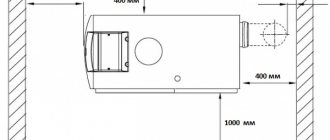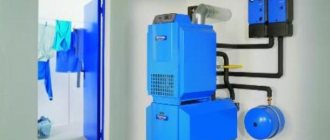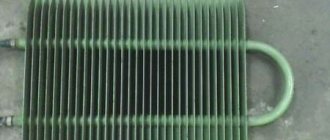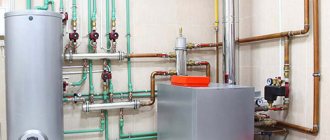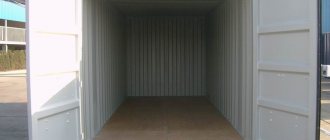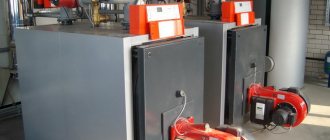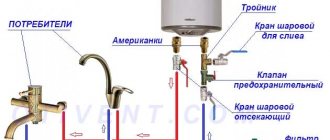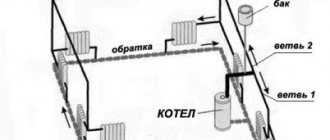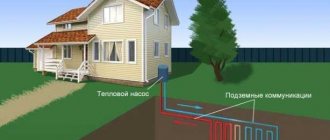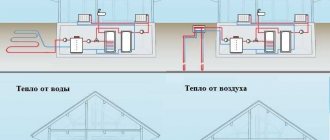Heating start - timing
While most of the country's private households are equipped with autonomous heating systems, most apartments are connected to centralized systems. The periods of heat supply for apartment buildings are regulated in the following documents:
- Resolution of the Government of the Russian Federation No. 354 of May 6, 2011;
- Federal Law No. 190 of July 27, 2010 "On Heat Supply";
- SanPiN 2.1.22645-10.
The timing of starting heating in homes depends on the region. Also, the determining factors are forecasts of weather forecasters and established weather conditions. The temperature value that is considered acceptable is 19-21 ⁰С. In rooms where small children and elderly people are constantly there, there is a slightly different standard - 1-2⁰C higher.
The right to start the heating season exists all year round. Services are obliged to start heating the next day after the end of a period of 5 days, during which the average daily temperature did not exceed + 8⁰C.
The command to supply heat is given by the local government. The date is determined by the relevant decree, which is published on the official website of the city or district administration. The management companies and homeowners' associations do not have the right to start heating at their own discretion.
Economical heating systems for a city apartment
It should be recognized that economical heating is not always an abstract concept. Such systems really exist today and everyone has the right to independently make a choice what to give preference to. The main aspect in this case is the minimum consumption of fuel consumed by heating devices and equipment to achieve the required temperature. For residents of city apartments, there is no alternative to gas and electric heating. For private houses and cottages, there are much more options with a choice of type. The diagram shows a schematic diagram of gas heating in an apartment.
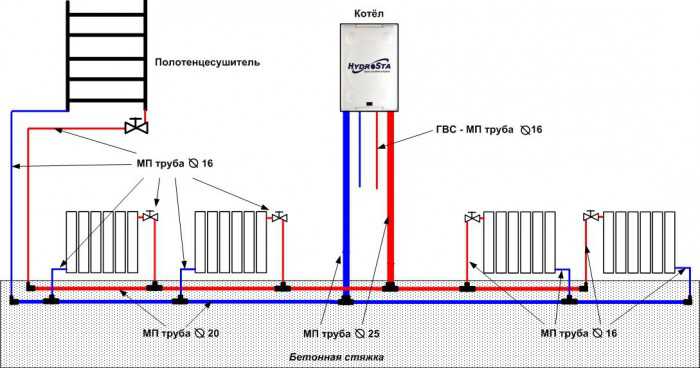
A city apartment is a space limited by building structures and communications. In addition, when organizing decentralized heating, the opinion of neighbors and other residents of an apartment building should be taken into account. Gas generators and pyrolysis boilers are not suitable for a city apartment, as is the option with air heating. The only possible options are gas, water, or electricity. Gas and electricity in our homes are the only fuels and energy available that can be used for their intended purpose.
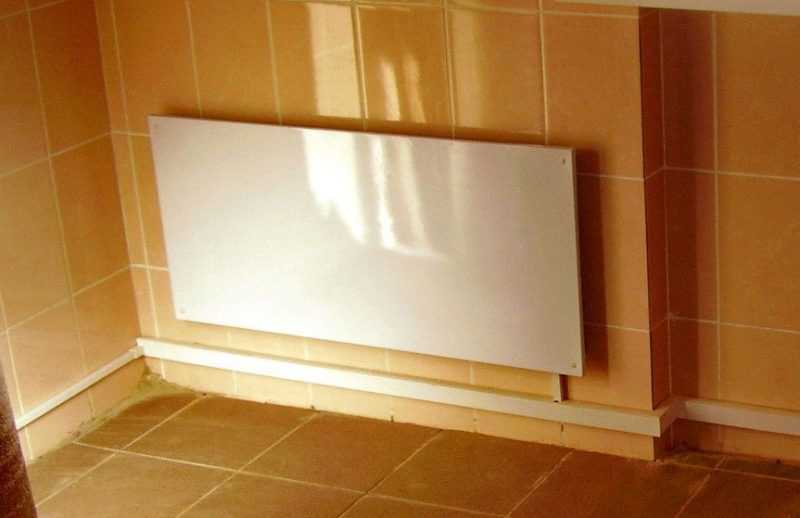

Traditional for many of us, water heating is considered the most acceptable and practical. Gas, unlike electricity, is almost always present in the mains.
Important! Compared to electricity, the cost of energy consumption for gas heating is much higher, despite the high efficiency of electric boilers. Gas in this regard significantly outperforms electricity. Moreover, the cost of electric heating in accordance with current tariffs is neither more nor less, 4000 rubles / Gcal.
Even if you managed to install a super economical electric boiler equipped with a control system, the electricity bills will surprise you unpleasantly at the end of the month. We'll have to save on our own household needs. Electricity for a city apartment, especially considering the length of the heating period in our country, remains an expensive pleasure for heating living quarters. The use of electric household heaters can be used as an auxiliary measure.Electric boilers, convectors and household heat guns are mainly used to maintain an optimal temperature, or to create a high temperature in an apartment at a certain moment.
Be sure to check out: how to pay less for heating?
How fees are calculated
Calculations are carried out in accordance with the provisions of the Decree of the Government of the Russian Federation No. 354 of May 6, 2011. When performing operations, the categories of objects are taken into account:
- Residential and non-residential premises located in apartment buildings;
- Communal apartments;
- Home ownership.
Apartment buildings
When performing calculations, the readings of individual metering devices installed in apartments are taken into account. This allows the owners not to overpay, will not allow defaulters to save at someone else's expense. The calculation is carried out taking into account the following factors:
- The period during which the calculations are made;
- The presence of a common household appliance, accounting for resource consumption;
- The method of arranging apartments with individual metering devices;
- Thermal energy supply method.
Dwelling houses
The rules for calculating payment for heating of private households determine the owners to pay for heating directly for the dwelling and outbuildings - if there is a connection to the system. In the event that individual metering devices are not installed at the facilities, the standards established in the regions are used for calculations. When the instrument is equipped, the board is calculated according to its readings.
Maintenance of buildings of large areas or located in regions with harsh climatic conditions requires considerable financial costs. Owners have to resort to affordable savings.
Fuel selection
This method of saving on heating is suitable if you use a solid fuel boiler, fireplace or stove.
Each fuel has a calorific value. This indicator suggests that. How much heat energy is released during combustion and can be used to heat water or coolant.
Compare the cost of different solid fuels in your area and their calorific value. Choose the most profitable option and use it. Here is a comparison chart:
| Fuel | Calorific value, MJ / kg | Fuel | Calorific value, MJ / kg |
| Wood pellets (pellets) | 18.5 | Anthracite | 26,8…34,8 |
| Dry firewood | 8,4…11 | Brown coal | 13…25 |
| Dry birch firewood | 12.5 | Brown coal (briquettes) | 20.2 |
| Oak wood | 19.9 | Brown coal (dust) | 25 |
| Spruce wood | 20.3 | Donetsk coal | 19,7…24 |
| The wood is green | 6.3 | Charcoal | 31,5…34,4 |
| Pine wood | 20.9 | Hard coal | 27 |
| Peat | 16.3 | Coking coal | 36.3 |
| Fibrous peat | 21.8 | Kuznetsk coal | 22,8…25,1 |
| Milling peat | 8,1…10,5 | Chelyabinsk coal | 12.8 |
| Peat crumb | 10.8 | Ekibastuz coal | 16.7 |
Advice
It is most profitable to buy firewood, pellets or coal before the heating season. When the demand for them falls. This way you can save additional money on heating your home.
How to save on heating in an apartment
Currently, it is not at all necessary to use centralized systems to heat an apartment. There are also more profitable alternatives. In order not to overpay, it is recommended to adhere to several saving rules.
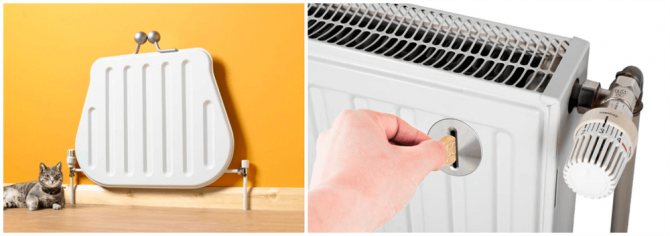

Warming
It is possible to provide comfortable living conditions in a house or apartment by solving the issue of heat loss. There are cold spots in many areas. Usually these are windows, doors, balconies, walls. Neglecting these points is a common reason for wasteful heating costs.
Installing a counter - for or against
Not in all cases, the installation of an apartment meter is justified. In addition to the heat consumed, the owners have to pay for its delivery, heating staircases and other non-residential premises. When equipping a house with good thermal insulation, it may be more profitable to calculate the payment, taking into account the heat consumption of the entire building.The indicators are calculated by dividing the amount payable by the number of apartments in the house.
Temperature control
Reducing the temperature in the apartment by the owner, subject to the installation of a metering system, will also resolve the issue how to save on heating in an apartment... In this case, registration with the management company is required.
Reducing the temperature in the house by 1⁰ will save up to 6% heat.
Refusal from central heating
Despite the fact that at first glance it seems impossible to refuse heating by connecting to a centralized system, alternative options exist, and their use is quite realistic. An alternative to central heating is the arrangement of an autonomous heating unit, the components of which are the following elements:
- Available heaters, which can be of various categories - from budget oil radiators to expensive monolithic systems;
- Warm floors, which can also be of two types - cable or infrared. Not so long ago, only homeowners with high incomes could afford the installation of underfloor heating systems. They are now becoming more affordable;
- Electric and gas boilers provide many benefits. Their installation will allow you to control the quality and amount of supplied heat, to maintain an optimal microclimate in the room.
The use of a gas or electric boiler during operation is quite beneficial. The only drawback is that at the initial stage of the installation it will take a lot of effort. This is the time required to coordinate all issues with the relevant authorities, install the structure, etc.
Savings on heating with a heater
The huge selection of heating systems available on the market will allow you to easily select a heating source that will complement a centralized system. Additional devices - heaters can be indispensable in the winter season, when low temperatures do not allow providing comfortable living conditions in the room. Manufacturers offer several types of heating devices, which have their own advantages and disadvantages:
Oil
Low cost and the ability to heat a room up to 20 square meters are the main advantages of the device. Heating efficiency is ensured by the high conductivity of the coolant. Operational safety, due to the presence of a temperature control sensor, is also important when choosing. This allows you to leave them indoors without fear of fire. The disadvantage of the models is the duration of heating and overdrying of the air.
Converter
A converter heater is the most economical option for providing auxiliary heating. Its advantages also include an affordable price, quick warm-up, light weight and low energy consumption. The lack of models is fire hazard.
Fan heaters
Quite practical models of heaters that can be installed on any surface - both horizontal and vertical. There will be no problems during transportation. The high power allows large areas to be heated. Noise and overdrying of air during operation are the disadvantages of installations.
Infrared heaters
The ideal solution for non-residential premises is infrared heaters. The following characteristics also speak in favor of this choice - noiselessness, safety at work, economy, efficiency, low power consumption. The device is quite expensive. Buying budget Chinese models is impractical - during operation, the owners often have to change lamps.
Micathermic heaters
These devices are quite expensive, and not everyone can afford to buy.Parts sealed in a mica case emit infrared waves during operation of the equipment, heating the room. Quiet, completely safe and compact models are able to quickly heat up a large area.
The kopeck the ruble protects
To find out what the system gives, the Moscow Housing Inspectorate compared the heat consumption in houses of mass series: II-18, I-209A, II-49, I-515. Those, in which the equipment was installed, saved an average of 26 percent of thermal energy over the past season. Experts emphasize that the effect will be noticeable only if the general house metering device is working properly in the house.
For example, in house No. 15, building 1 on Kronstadt Boulevard, where there is an automatic system, from October to January, heat consumption was 197.09 Gcal. In a house at 18 Avangardnaya Street of the same series and area, but without a system, 312.06 Gcal were spent. As a result, residents of the house on Kronstadt Boulevard paid 223,000 rubles less.
For one house of the II-18 series, the savings will be 138 Gcal or 268 357 rubles per year, the I-209A series - 103 Gcal or 200 295 rubles, the II-49 series (five-section) - 320 Gcal or 622 278 rubles, and for the I-209A house -515 (four-section) - 367 Gcal or 713 675 rubles.
If we count for each resident, then the savings are from six to eight rubles per square meter per month.
The costs of installing equipment, depending on the area and series of the house, with high-quality operation, pay off within three to six years.
Recalculation of fees
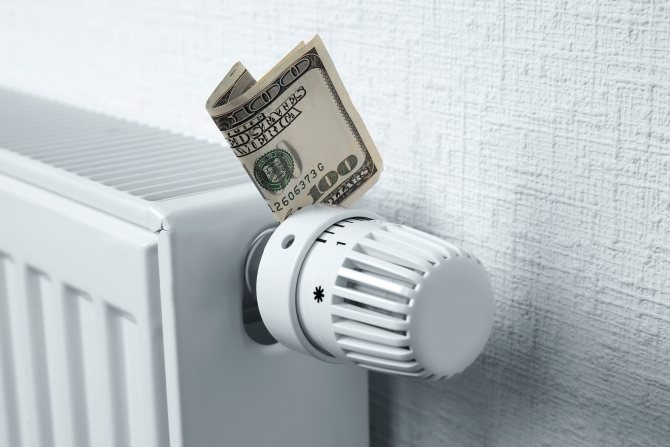

In order not to overpay to the service company if the temperature indicators do not reach the established standards, you must contact the company for recalculation. For ordinary rooms it is 18⁰С, for corner rooms - 20⁰С. Decree No. 354 of 06/05/2011 determined that an excess of no more than 4⁰С is permissible. At night - from 0.00 to 5.00 o'clock - a decrease is possible by no more than 3 ⁰, in the daytime a deviation is not allowed. When performing calculations for each hour of violation during the calculation, the amount of the fee shall be reduced by 0.15 percent of the amount of the fee determined by the norms.
Procedure
After you have identified a decrease in temperature, with the onset of the heating season, you should contact ADS with a complaint. Further, it is necessary to wait for the specialists of the management organization, who, after inspecting the room and measuring the temperature, will prepare an appropriate act. One copy remains with you, the other is transferred to the management company. This document will serve as the basis for obtaining the recalculation.
Preparation
It doesn't matter what you heat your home with - a boiler, stove, heat pump or air conditioners. Heat sources need to do prophylaxis before the heating season:
- Dirty boilers and stoves are ineffective. A large amount of heat goes into the pipe, since due to pollution it cannot effectively give it to the water in the heating system.
- The heat pump will work less efficiently if it is low in refrigerant or dirty oil. During the downtime, sediment may appear in its pipes, plugs may form, etc. they will reduce its efficiency.
- Electric convectors must be thoroughly rinsed - in summer a lot of dust has accumulated on their inner parts. Which does not allow you to effectively heat the air.
- If you are going to use air conditioners to heat your home, they should also be prepared. Be sure to clean the outdoor and indoor units. Check the quality of work, how well the air conditioner blows and heats.
Heating savings - affordable means
There are several more ways to save on heating in an apartment:
- Installation of a heat-reflecting screen, which is an aluminum foil and an additional layer of foamed heat insulator. Usually, these devices are sold at building materials stores.By reflecting heat away from the walls and directing it into the interior of the room, the screen prevents heat loss. Attachments are especially useful in insufficiently insulated homes;
- Heating through heating pipes is quite effective. Many, when carrying out repair work, try to close them. As a result, the amount of heat supplied to the apartment decreases;
- Insulation of the floor will provide more comfortable living conditions in the apartment. This can be a simple replacement of cold tiles with laminate, parquet or warm carpet.
A few simple tips will help you figure out how to save on heating:
- Try to close doors to cooler rooms. Keeping warm for longer in warmer rooms, you can save on heating.
- Shared leisure time together is also a great solution. Spending evenings with your family in the same room can reduce the heating intensity in empty rooms.
- Reducing the power of the radiators at night. The ideal temperature for sleeping is 18⁰. Cool air ensures healthier sleep and more comfortable rest. Closing windows at night with curtains or blinds will also reduce heat loss.
- Save money while no one is home. In almost every family, the apartment is empty during the day - children are in school or kindergarten, parents are at work. Reducing heating power for this period is ideal.
- Control the humidity level. Optimal rates are from 40 to 60%. Too high humidity will require more heat to warm up, excessively dry air is harmful to the mucous membrane of the respiratory tract.
- The warmth of the neighboring apartments will also serve as an additional source of heating. It often happens that apartment owners, which are surrounded on several sides by well-heated apartments, do not have to spend a lot of money on heating costs. Their dwellings are heated by neighboring rooms. Heating is especially effective for "neighbors", whose apartments are equipped with underfloor heating systems.
- Dress warmly - during the winter season, you don't have to walk around the apartment in a T-shirt and shorts. In order to be comfortable, the temperature in the apartment should be at least 23-24⁰. Maintaining the temperature regime at a level of about 21-22⁰ is much more profitable. All you need to do is just dress warmly.
- Check the cleanliness of heating radiators. At first glance, it seems that dust practically does not accumulate in them, and that that can settle does not interfere with heating. However, this opinion is erroneous. Being a good heat insulator, dust can reduce the efficiency of radiators. The intensity of air heating decreases, and it becomes not so comfortable to be in the room.
It is quite possible to save on heating the apartment. In order not to overpay too much, it is recommended to adhere to a few simple rules, to know and be able to operate with the norms and provisions of the legislation.
Separate heating
Experts advise to set its own temperature regime for each separate room or room. So you can save a little on heating.
For example, in the kitchen, you can set the temperature 1-3 degrees lower than in other rooms - cooking food and turning on electrical appliances compensate for this difference.
The same applies to bathrooms, storage rooms, and other rooms in which you do not spend a lot of time. Stay for 5-10 minutes indoors. In which the temperature is 2-3 degrees lower than in the rest of the house. Will not make you uncomfortable.
General saving methods
There are several points that apply to any heating in any type of home ownership.
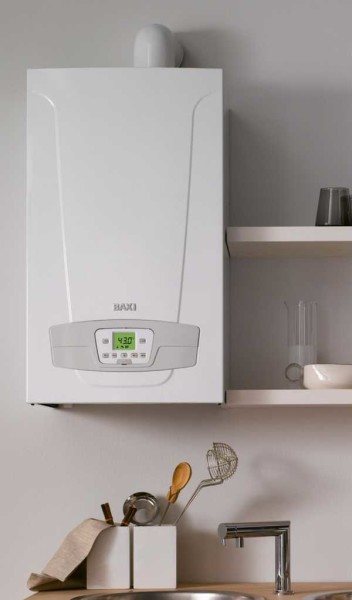

New heating equipment uses energy resources much more efficiently
- If there is an old heating equipment, it should be replaced. For the last 10-20 years, when developing new models, much attention has been paid to fuel economy. This is especially true for European products. Yes, their boilers are more expensive.And decently more expensive. Yes, they are demanding on the power supply. But they are much more economical than the products of domestic manufacturers. It's just a very high energy price in Europe, which means that every percentage of the savings is important. The improvements are sometimes small, but they add up to good results.
- If you have at least some opportunity to have a guaranteed power supply, buy automated boilers. They spend exactly as much energy as is required to maintain heat and no more.
- Install thermostats in the rooms (if the boiler automation allows). It is more profitable to maintain the state of the system not by the temperature of the coolant, but by the air temperature. Firstly, it is more comfortable, and secondly, in warm weather, in the off-season, less fuel is spent.
- If you don't install a thermostat, you can do almost the same with thermostatic valves on radiators. These are devices that also maintain the temperature, but on the same radiator (in the same room). Set the desired temperature on it, and this tap / valve itself regulates the flow rate of the coolant.
- If you are going to make repairs or your house is only under construction, if possible, put a water floor. It's not just comfortable. Underfloor heating allows you to save about 20% on heating bills. However, installation is expensive.
One savings for all
The overwhelming majority of apartment buildings in the capital are not heated independently, but centrally. And so much heat is supplied to the buildings that we are guaranteed not to freeze even in the most bitter frosts. But our climate is so original that it has long been the norm for zeros and regular freezing temperatures (remember the New Year). And the batteries keep everything warm and not warm. Because common house equipment does not know how to respond quickly to weather changes. But this is fixable - more than 600 Moscow high-rise buildings can boast of smart equipment that did not cost residents a dime, but saves up to 25% on their payments.
The most difficult thing is to gather neighbors for a general meeting of house owners. It is at this meeting that the people must vote for the energy-efficient future of the building. A document with signatures is handed over to the managing organization, after which your mission ends. The house manager himself concludes an agreement with the energy service company Olga Folomeeva. - Payment is made solely from the cost of the saved heat. The Weather Control Unit is installed in the basement of the house and will regulate the heat energy consumption according to the outdoor temperature sensor. Monthly acts on the amount of savings are signed and controlled by the structures of the Moscow Government: GKU Energetika and State Budgetary Institution Zhilischnik District.
When the contract with the company comes to an end, the management company will be responsible for the operation of the smart equipment. And your heating bills will finally be cut by a quarter (now all the savings go into your pocket).
Thermostats for heating radiators
Heating options for a private house are not limited to a boiler + radiator combination, and yet radiators are used in most cases. Installation of thermostats allows you to save up to 20% heat.
Thermostats (or thermostatic sensors) are installed directly on the battery and work according to the principle:
- the ambient temperature is recorded,
- if it is higher than required, the supply of heat to the room is limited.
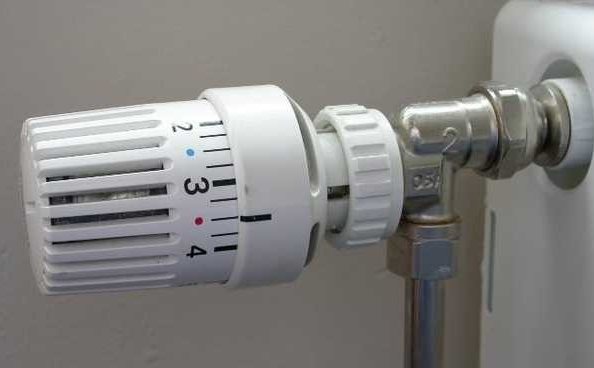

The thermostat consists of two parts: a thermal head and a valve, which are interconnected. The thermal head perceives the temperature and when it is exceeded relative to the set temperature, it shuts off the coolant supply with a valve. To determine the temperature, the thermal head is filled with a temperature-sensitive medium (liquid or gas), which expands and presses on the valve when the temperature rises, while when the temperature decreases, on the contrary, it lets in more heat.
The essence of the device is not to heat the room more than necessary.This saves heat and ensures a stable temperature regime, which in turn increases the degree of comfort for residents.
For correct operation of the thermostat, it must not be installed near a heat source (hot pipes, etc.), in a draft, under a massive window sill, under heavy curtains or decorative elements that tear off the battery. And, by the way, a variety of grilles designed to hide a radiator, curtains and furniture, blocking the access of warm air from the battery, leads to greater heat consumption.
There are thermostats that measure the water and thus regulate the temperature of the water supplied to the system. The essence of their work is the same.
The choice of thermostats is quite large: with a remote temperature sensor, an external controller, programmable, with protection, etc.
Watch the video about the installation and operation of the thermostat:

